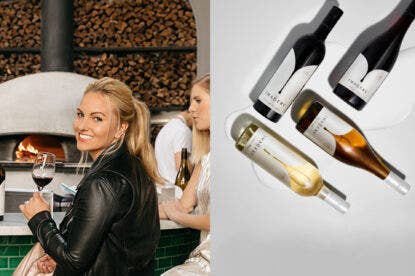Merlot’s gone soft, Chardonnay’s in a rut, but Pinot’s Triumphant—a snapshot of California’s leading varieties.
Another year has come and gone. As is my custom, it’s time once again to look at the State of the Grapes in California.
Aromatic whites: Even though Chenin Blanc, Gewürztraminer, Riesling and Viognier are hard to sell, these orphan whites continue to swim against the tide. I’m not a big fan. I can appreciate them when made by a producer that really cares, like Claiborne & Churchill, but most are better off in California as dessert wines. Viognier comes closest to making the cut, but too many remain bizarrely exotic and mushy. Alsace, Germany and (for Chenin) the Loire have nothing to worry about.
Cabernet Sauvignon: Last year I described Cab in terms of “balanced hedonism.” That’s a good place for Cab to be, but not every wine finds its way there. The best—Harlan, Colgin, Araujo, Sloan and a handful of others—are the equals of any Bordeaux wines on earth. They’re our First Growths, a club that’s hard to crash. Those lucky enough to taste them (which I do by virtue of my job, not my income) are spoiled for the rest. From there on down, there’s a direct price-value relationship. With Cabernet Sauvignon, you get exactly what you pay for.
Chardonnay: California’s greatest white is still great, but too many winemakers settle for the formula: ripe, oaky and sweet. You either like Chardonnay or you don’t. I do, but I can see the day when my palate finally turns against it, and I suspect younger wine lovers already are turning away, seeking drier, crisper whites, like Grüner and Albariño. One bright spot is unoaked Chardonnay, which can be a value.
Dessert wines: I can’t remember the last time anyone I know had an after-dinner wine just for the heck of it, especially if they were driving. Too bad, because there are wonderful dessert wines out there, both white and red. They just don’t fit into our lifestyles.
Merlot: What is California Merlot, anyway? The old “softness” argument melted away years ago, along with Cabernet’s tannins; both wines these days tend to be soft. Granted, there are masterpieces, but they’re the exception, by far. Most Merlot is boring, and the fact that it’s the number one red wine in America acts against it: producers dial it in, knowing they’ll sell what they make. Still, for the ABC crowd, the substitute for Cabernet Sauvignon is Merlot.
Pinot Gris/Grigio: The success story of 2006. It can be a refreshing white guzzler if priced right, and a finely crafted PG can be great. Whether it’s stainless, like Etude’s, Burgundian, like Chalk Hill’s, or somewhere in between, California’s best come from a cool climate. They combine the minerally cleanness of a crisp dry white with the creaminess of Chardonnay. And prices haven’t skyrocketed. Yet.
Pinot Noir: The impossible dream continues. How fortunate California is to have been able to add this great grape to its arsenal. The older areas, like Russian River, happily purr along, while newer ones, like San Luis Obispo and Santa Rita Hills, can stun. And there are dozens of small new brands every year, fueled by great vineyards, always keeping the excitement level at fever pitch. But forget about hot climates, where the wine can be harsh and flabby, and forget about value. You’ll always pay for great Pinot Noir.
Sauvignon Blanc: Last year, my hopes for Sauvignon Blanc were higher than today. The goal still is to avoid green, feline smells and tastes while keeping the wine dry, no mean feat to judge by the flood of simple, semi-sweet bottlings. Lake County continues to impress; they really do have something unique up there. But watch those prices.
Sparkling wine: Little has changed over last year. We still have the top tier—Roederer Estate, Schramsberg, Iron Horse and, sometimes, Domaine Carneros. Then there’s everyone else. Overall quality is impressive. But America isn’t in a sparkling wine drinking mood these days.
Syrah: Most Syrah is okay. Good, fruity, soft, but not the kind of wine that makes you bolt up and sing from the rooftop, the way a great Cab or Pinot does. I have loved various Syrahs over the years but I’m amazed at how scattershot the successes are. Syrah is still like Forrest Gump’s chocolates: you never know what you’re going to get.
Zinfandel, Petite Sirah: There’s no longer any reason to separate these two because, texturally, they’re so close. Both are dark, full-bodied wines, with a tendency toward superripeness, high alcohol and residual sugar (paging Kent Rosenblum). Besides, many Zins have Pet in them, and vice versa. There’s an historic place for these wines as well as a culinary one, but the specialists should figure out what to do with all that sugar at harvest.
Conclusion: 2006 was steady as she goes. No big surprises, no huge leaps forward (except for PG), no major fumbles. Will 2007 bring anything new? Stay tuned.
Have an opinion or question? Email us!
Published: January 1, 2007















